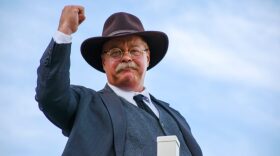Collegiate football has always been a contact sport, but in its early days, which began in the late 1870s, it was particularly deadly. The game had not developed the forward pass, and there was regular fighting, with fists thrown. Scoring was mostly made by kicking the football to the goal. Bones were snapped, eyes were gouged, and men were even killed. Flimsy equipment, leather helmets and mere sweaters were little protection for the players – many of them illegally hired by colleges.
Despite the mayhem, blood and disorder, the game had a strong fan base, which included President Theodore Roosevelt. TR loved the game; all four of his sons had played. In 1905, the President knew there had been at least 18 deaths on the field.
Continuance of the sport was on the line when TR met at the White House with the presidents of Harvard, Yale and Princeton. TR threatened football’s future if it were not reformed. That crew of educators and others devised a plan to re-tool the dangerous game through tighter rules of play, better uniforms and helmets, and more honorable officials.
Many claim that Theodore Roosevelt helped save football. As he said at Cambridge in England:
“One of the things I wish we could learn is how to make the game of football a rather less homicidal pastime. I do not speak as a sentimentalist, but I do not think that killing should be the normal accompaniment of the game. I would not have football abolished for anything, but I want to have it changed, just because I want to draw the teeth of the men who always clamor for the abolition of any manly game. I wish to deprive those whom I put in the mollycoddle class, of any argument against any good sport!”
Dakota Datebook: Remembering Theodore Roosevelt is written and performed by Steve Stark. Funding provided by the Theodore Roosevelt Medora Foundation.




